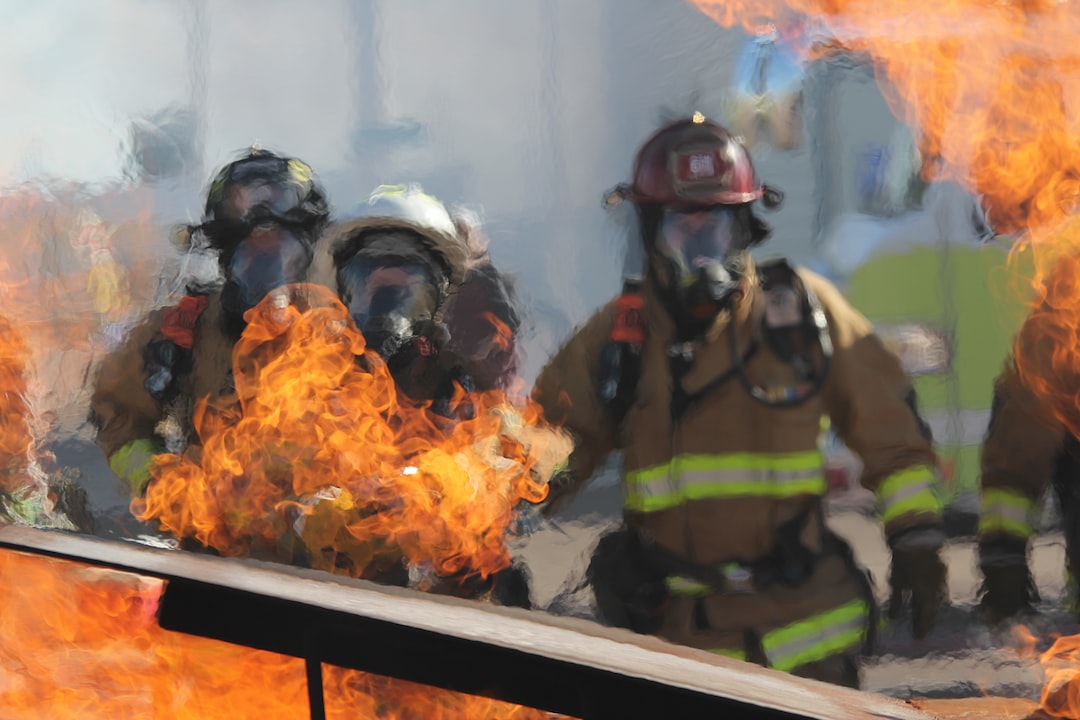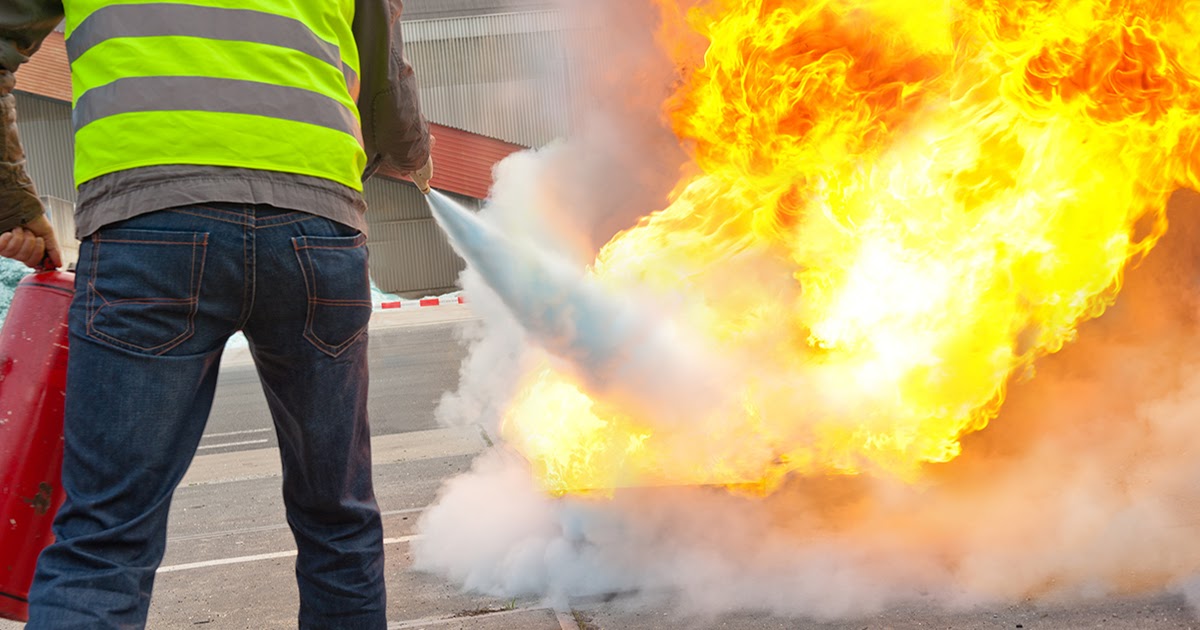
Articles
How Often Should You Formally Refresh Staff Fire Training

Business heads should guarantee that personnel is up to date on fire safety procedures. But how often should you formally refresh staff fire training? It can be easy to forget about the importance of fire safety and put off refresher courses until an emergency arises. However, regularly refreshing your staff on proper procedures can help keep everyone safe and make sure they're prepared for any situation.
In this blog post, we'll explore how often should you formally refresh staff fire training and why it's important to frequently review fire safety training with employees as well as strategies for developing an effective plan and creating a culture of awareness around the topic. Let's dive into how often should you formally refresh staff fire training.
Fire Safety Training
Fire safety training is a critical component of any business. It helps to ensure the safety of employees and customers, as well as protect company assets from potential fire-related damage. Different fire safety training options exist, such as in-person lectures, web-based courses, practical drills, and more.
Classroom instruction, which typically covers topics such as fire prevention, response protocols, and evacuation procedures, is a type of fire safety training commonly used in businesses with 25 or more employees. This type of course typically covers topics such as how to prevent fires, how to respond if a fire occurs onsite, and evacuation procedures. Online courses offer another option for those who prefer a self-paced learning environment; they cover similar topics but may also include additional information about recognizing hazards and understanding building codes related to fire prevention.
Day staff require fire training, and it is also important that night staff receive fire training. Hands-on drills provide an opportunity for participants to practice their skills in real-world scenarios; these can involve simulating emergency situations or role-playing scenarios where participants must react appropriately when confronted with a potential hazard or emergency situation.
Benefits of Fire Safety Training
Having trained personnel who understand the importance of preventing fires and responding quickly during an emergency can save lives and property in the event that a blaze does occur onsite. In addition to this important benefit, having well-trained staff members also provide peace of mind for employers knowing that their workers are prepared should an incident arise; it also reduces liability risks associated with not taking proper precautions against fires occurring at work sites.
Training in fire safety is essential for businesses of any size to safeguard their workers and assets, as well as preserve lives. Creating a comprehensive fire safety scheme can assist companies in mitigating hazards, preserving resources, and saving lives.
Developing an Effective Fire Safety Plan
To ensure your company’s safety, it’s important to understand the components of an effective plan and how to establish clear protocols and procedures.
Identifying potential fire hazards in the workplace is a crucial part of an effective fire extinguisher training and fire safety plan. This includes anything from faulty wiring or overloaded circuits to flammable materials stored improperly or combustible dust accumulations. It also involves conducting regular inspections and risk assessments to identify any potential issues that could lead to fires.

Once identified, steps should be taken immediately to mitigate these risks. Establishing clear protocols and procedures is another essential element of a successful fire safety plan. These guidelines should include details such as evacuation routes, assembly points, contact information for emergency services, as well as policies regarding prevention measures like smoking restrictions or proper storage techniques for hazardous materials onsite.
It’s also important that all employees are familiar with these protocols in the fire extinguisher training so they know what actions need to be taken in case of a fire emergency situation.
Finally, implementing the plan effectively and ensuring compliance across all areas within your organization is critical for its success. Regular training sessions can help ensure everyone understands their roles during an emergency situation while drills can help test out different scenarios and provide feedback on how processes can be improved further down the line if needed.
Additionally, having reliable systems in place that allow you to track progress towards meeting certain goals related to fire safety will give you peace of mind knowing everything possible has been done when it comes time for inspections by local authorities or insurance companies alike.
Lastly, implementing the plan effectively and ensuring compliance across all areas within your organization is critical for its success. Regular training sessions can help ensure everyone understands their roles during an emergency situation while drills can help test out different scenarios and provide feedback on how processes can be improved further down the line if needed. Additionally, having reliable systems in place that allow you to track progress towards meeting certain goals related to fire safety will give you peace of mind knowing everything possible has been done when it comes time for inspections by local authorities or insurance companies alike.
Day staff require fire training, and it is also important that night staff receive fire training. Developing an effective fire safety plan for all staff is essential to ensuring a safe and secure work environment for all employees.
Creating a Culture of Fire Safety Awareness
To ensure the safety of all, it is essential to cultivate an atmosphere in which personnel is informed about fire prevention measures.
Educating employees on fire safety concepts such as identifying hazards and responding to emergencies should be a priority for organizations. Ensure that personnel comprehends fundamentals like how to detect potential risks and what actions should be taken in the event of a fire. Additionally, provide them with access to resources such as pamphlets or videos that explain the proper protocol for responding to fires and other emergency situations — ideally in their employee handbook.
Encouraging regular self-assessment and reporting practices can help keep everyone accountable when it comes to adhering to fire safety standards. Encourage employees to inspect their work areas periodically for signs of danger or possible risks related to fires. Have them report any issues they find so you can address them promptly before they become more serious problems down the line.
Finally, promote ongoing communication around fire safety issues by hosting regular meetings or training sessions where these topics can be discussed openly and honestly among all members of your team. By doing this, you’ll create an atmosphere where people feel comfortable discussing their concerns without fear of judgment or repercussions from management — and ultimately make your workplace safer for everyone involved.
Instilling a mindset of alertness to fire dangers is critical for guaranteeing the safety and security of everyone in the workplace. By establishing emergency response plans, practicing evacuation drills regularly, and setting up clear chain-of-command protocols for emergencies, businesses can further prepare their staff in case of an unexpected event.
Preparing for Emergencies and Evacuations
Making arrangements for potential crises and departures is a vital element of any business's safety strategy. Developing emergency response plans and procedures, practicing evacuation drills regularly to ensure readiness in case of an emergency, and establishing clear chain-of-command protocols are all key components that should be included in any fire safety program.
When developing an emergency response plan, it’s important to consider the potential hazards that may arise in your particular environment. In devising a crisis response plan, potential risks should be taken into consideration, ranging from risky materials or equipment to natural catastrophes such as inundations and tremors. This includes having clearly defined roles for personnel so everyone knows who is responsible for what tasks during an emergency situation.
Additionally, it’s also important that when employees receive fire safety training to have a designated safe area where employees can gather if needed during the evacuation process.
Regularly practicing evacuation drills is another critical component of being prepared for emergencies or evacuations. Drills can help personnel become acquainted with their part in the event of an emergency and make sure they know how to exit rapidly and properly if needed. Periodic drills should be conducted, if feasible; this will assist personnel in being aware of the right protocols and providing them with the assurance that they can cope when faced with a real emergency.
To ensure the order is maintained throughout the entire process from start to finish, it is essential to have established chain-of-command protocols; this includes alerting staff about potential danger and post-incident assessment and review. By pre-outlining each step ahead of time, employees will be able to quickly comprehend their responsibilities in the event of an emergency without any confusion or overwhelm when fear or panic arises during these "in hot water" scenarios.
FAQs in Relation to How Often Should You Formally Refresh Staff Fire Training
How often should you refresh your fire safety training?
It is recommended that fire safety training be refreshed at least annually. To ensure everyone is informed of the most recent safety measures, refresher courses should be taken regularly and new staff members must receive adequate fire safety training prior to beginning work. Regular refresher courses should also be taken, especially if there have been any changes or updates made to existing policies or processes.
Additionally, new staff members should receive fire safety training as part of their onboarding process before they start work. Ensuring a secure work atmosphere for all personnel in your business is accomplished by taking these precautions.
How often should training be conducted?
Regular refresher training should be held to make sure personnel are informed of the newest regulations and practices. Training should be conducted on a regular basis, with larger businesses recommended to do so at least every six months or quarterly.
Furthermore, if any modifications are made to the company's policies or operations over this time period, extra training may be needed in order to make sure all personnel has been informed and adhered to.
How often should fire drills be conducted?
At least annually, and potentially more frequently depending on local regulations, fire drills should be conducted to ensure that everyone is familiar with the building's layout as well as evacuation and emergency response procedures. They should include all employees and be tailored to the specific layout of the building in which they are held. Drills should also test both evacuation plans and emergency response procedures so that everyone is familiar with what to do in an actual emergency situation.
Additionally, any changes to safety protocols or equipment must be communicated clearly during these drills for maximum effectiveness.
How often do employees need to be trained on how to use a fire extinguisher?
Employees should receive annual instruction and regular refresher training on how to correctly employ a fire extinguisher, including recognition of the various types of fires and proper use procedures for avoiding harm.
Trainees must be apprised of the diverse fire varieties, their recognition, and the proper use of a fire extinguisher to avoid harm or destruction. Employers must ensure that personnel comprehends when it is suitable and secure to employ an extinguisher so as to ward off harm or destruction.
Regular refresher courses may also be necessary depending on the type of work environment and specific safety protocols in place.
Conclusion
Fire safety training should be a top priority for any business, and it's important to stay up-to-date on the latest practices. How often should you formally refresh staff fire training will depend on your industry regulations as well as how quickly technology changes in this area.
Regular review of safety protocols during the fire safety training should be conducted on a yearly basis at a minimum, but more frequent refreshers may be necessary depending upon the particular requirements. By taking the time to develop an effective plan and create a culture of awareness around fire safety, businesses can ensure their employees are safe from potential hazards while also staying compliant with relevant laws and regulations.
Sign up now for a free 7-day trial with Trainual and scale your business!
Similar Blog Posts







